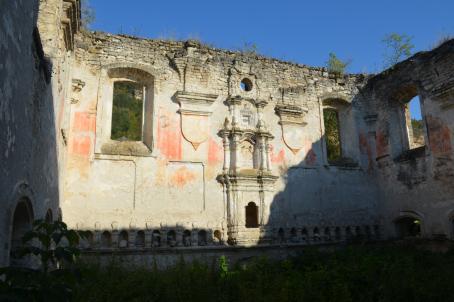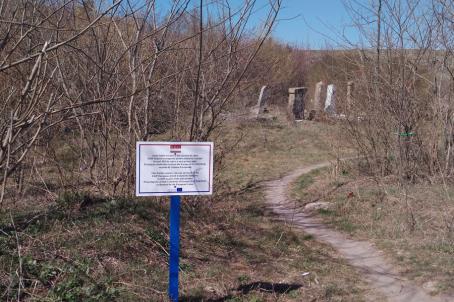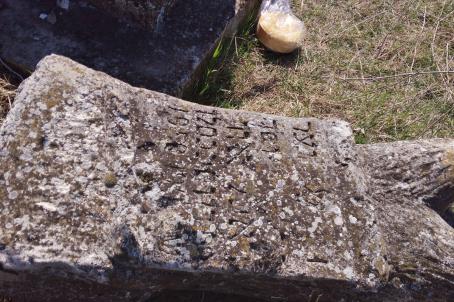Saint Cajetan Church, Rașcov

Saint Cajetan Church is a Roman Catholic church built in the 16th century when Rașcov was part of the Crown of the Polish Kingdom.

Saint Cajetan Church is a Roman Catholic church built in the 16th century when Rașcov was part of the Crown of the Polish Kingdom.

The Great Synagogue of Rashkov, a noticeable monument of regional baroque architecture, was constructed presumably in 1749, during the rabbinical tenure (1748-52) of R. Yaakov Yosef of Polonne (d. 1783), the author of the first hasidic book "Toldot Yaakov Yosef". The synagogue was ruined in 1930s, during an anti-religious campaign in the USSR. Since then only its roofless, unprotected walls remain, while some elements of its historical shape and decoration may be virtually reconstructed from the old photographs, drawings, and the memories of the prewar gabai's son Mikhail Voronsky (1914-2014). His memories were recorded in word and drawing by another Rashkov fellow, an Israeli architect Moris Kleinerman, who recently produced a meticulous graphical reconstruction of the synagogue in its better days. The synagogue was a monumental masonry edifice under a saddle roof, shielded by a shaped gable on its main, western front (the gable is not preserved). According to Voronsky's testimony, the main interior space of the synagogue was a lofty prayer hall with four pillars (also not extant) supporting eight perimeter bays of groined vaults; the central bay above the "bimah" was spanned by a cupola hidden in the roof space. The synagogue was decorated with interior paintings, representations of the Signs of Zodiac, real and fantastic birds and animals, and panels inscribed with prayers; the hall was lit by stained glass windows. In addition to the main hall, there were a western vestibule with a minute "winter synagogue" on the north, a council room on the south, and a women's area on the upper floor. A staircase inside the western wall lead from the council room to the attic. What makes this synagogue outstanding is its decoration with carved stone panels on exterior and interior. The carved central cartouche of the western elevation, the window hoods, the main Torah ark and that of the winter synagogue the niche for "ner tamid" and small niches in the eastern wall are masterful examples of local baroque. Especially interesting was a carved bas-relief seven-branched Menorah attached to the southern wall of the prayer hall: it echoed the ancient Menorah, likewise located on the southern side of the Tabernacle and the Temple of Jerusalem.

The cemetery has around 500 tombstones. Most of them have fallen, and a considerable part of them are broken. One side of the cemetery has remains of an old masonry wall.

The cemetery was in use in the 20th century and has 30 gravestones. Only a few have preserved inscriptions